“Spare Parts” shows biomedical research through the eyes of artists in London
Published 29 April 2019 by Marie Albert
The new Science Gallery London presents “Spare Parts”, an exhibition about repairing the human body and manipulating living things, through May 12.
London, special report
A few steps away from London Bridge, across the street from The Shard tower, Science Gallery London opened its doors in September 2018. It joins an international network of galleries dedicated to art-science crossovers, initiated 10 years ago by Trinity College in Dublin. All members of the network are the galleries of internationally renowned universities that are integrating arts and design into the innovation process and accelerating the transition from STEM to STEAM.
In London, the Science Gallery project is represented by King’s College, one of the UK’s oldest and most prestigious universities. Occupying a former wing of the historical Saint-Guy hospital, it enjoys 2000 m2 of entirely renovated exhibition space.
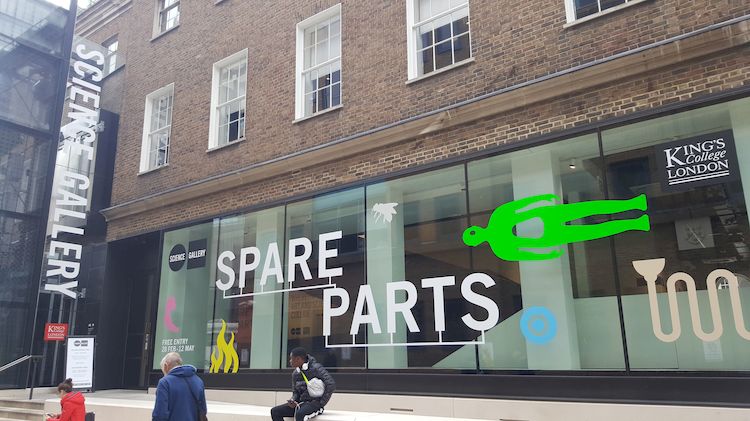
Inaugurated in September 2018, the gallery’s first exhibition “Hooked” explored addictions. Future shows will focus respectively on physics, anxiety and gender. While all the Science Gallery members operate as a network, producing exhibitions that will travel among them, they each have their own character. London’s theme is art, science and health.
Artistic explorations of biomedical research
The exhibition “Spare Parts” explores the latest scientific developments (including new studies from King’s College) in the field of biomedical research. What psychological and emotional aspects hide behind organ transplants and reconstructive surgery? How do “spare parts”—donated, modified or augmented—integrate the inside or outside of our bodies?
Production assistant Judit Agui explains: “We tried to demythify certain aspects of biotechnologies, to shine a light on existing techniques while showing more speculative and prospective works around the medicine of the future.”
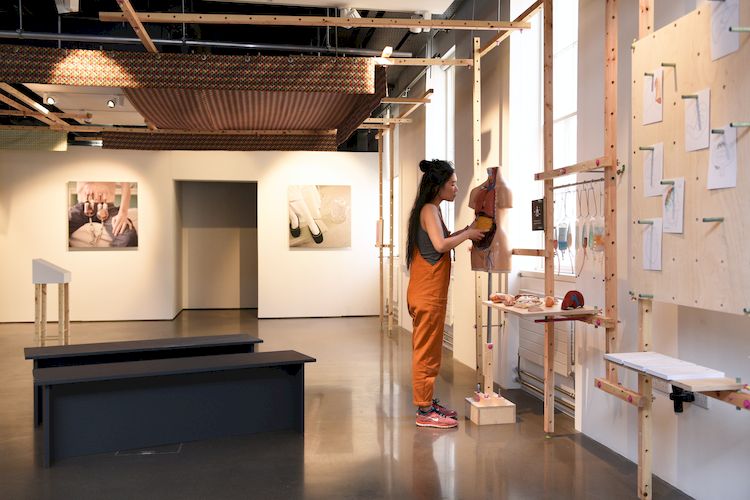
What also emerges throughout the exhibition is a resolutely artistic approach. Its minimalist layout and captions are far from the signage that mediates most science and technology cultural institutions. In contrast with “Designing the Living”, Centre Pompidou’s recent exihibition on biotechnologies, here there are few videos and no timeline, but plenty of human docents (mostly students) who are ready to answer questions in an informal manner.
From high-tech scientific research to low-tech installations
“Spare Parts” consists of 15 works, almost all collaborations between artist and scientists.
New Organs of Creation is an installation made by the London-based studio Burton Nitta in collaboration with Lucy Di-Silvio and Trevor Coward, both researchers at the Faculty of dental, oral and craniofacial sciences at King’s College. The piece presents a hypothetical development of the human larynx, inspired by the anatomies of koalas and cats, to produce low sound frequencies. Research has shown that these audio frequencies can help transform stem cells into bone cells, which could someday be used to fight osteoporosis. By playing recordings of British citizens expressing their hopes for the nation, Burton Nitta offers an artistic and political vision of these tissue engineering techniques.
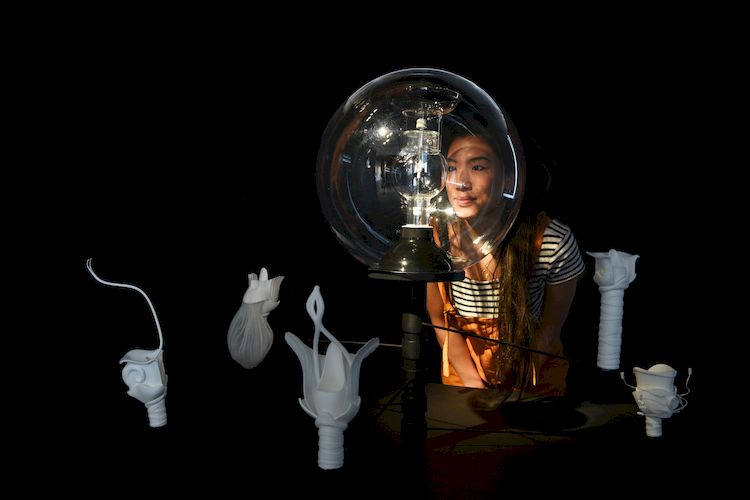
Artist Tabatha Andrews explores how modifications in sensory input can affect our perception of the environment, in two projects: Disturbance, an acoustic wall of recycled felted wool that absorbs sound, modifying our relationship to the space; and Listening Objects, oversized headphones that act as both a sound detector and an amplifier.
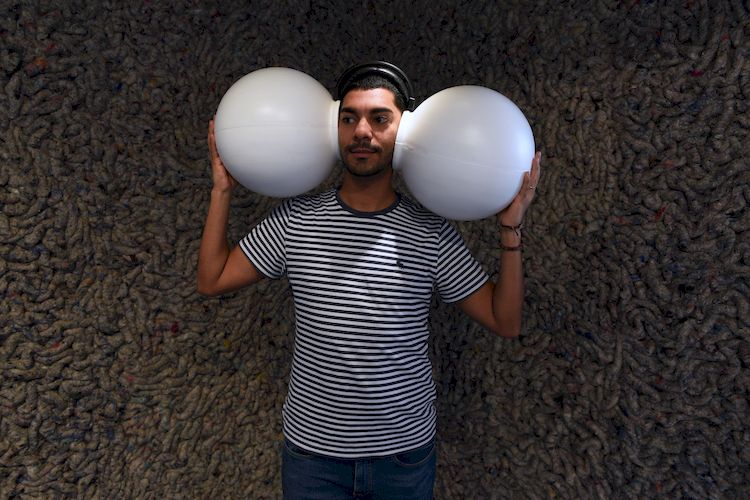
Going further into the experiential, designer Agi Haines’s The Anatomy Lesson: Dissecting Medical Futures invites viewers to perform “futuristic” medical acts such as cleaning a nanoparticle filter fitted inside a trachea. Yet another way of questioning the medicine of the future, its technological innovations and their desirability…
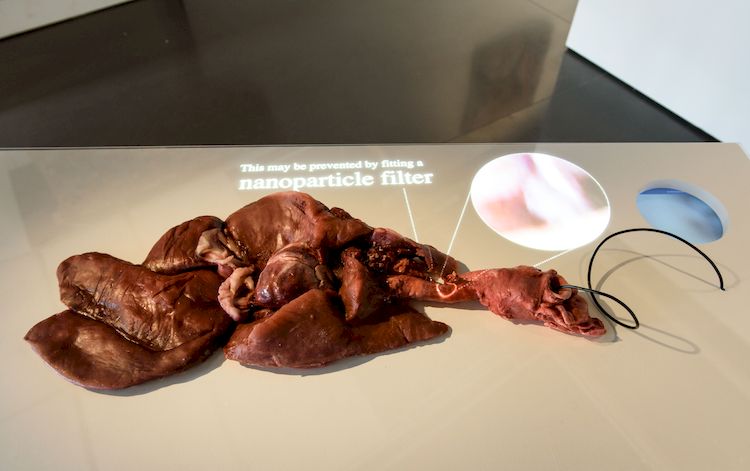
Big Heart Data, by designer Salomé Bazin, founder of the Cellule design studio for innovation in the health sector, and Pablo Lamata from the department of biomedical engineering at King’s College, presents another prospective vision of surgery. The piece consists of a digitally rendered human heart, allowing viewers to visualize the growth of a given heart and anticipate potential cardiac diseases. A wall of 3D-printed hearts provokes reflection on our own individuality and the way it is materialized all the way to our vital organs…
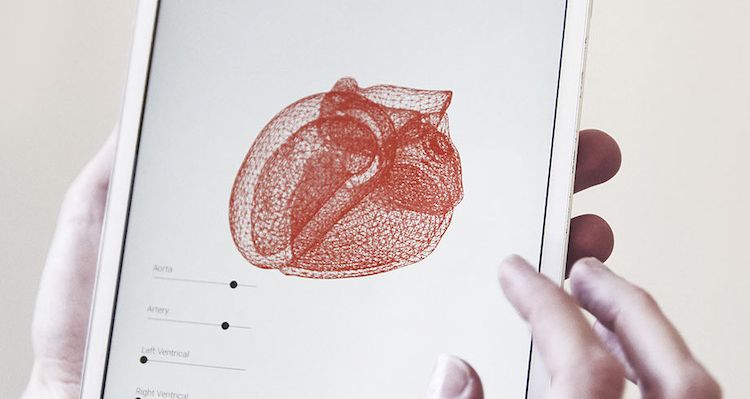
Adopting a much more low-tech approach, the two installations Vessels of Care and Control tackle the issue of creating and maintaining life, while questioning our relationship with nature.
The Hivecubator 2.0, by artist, researcher and beekeper Michael Bianco, demonstrates the interdependence between humans and bees. A DIY incubator of human cells is connected to a beehive, whose activity produces the heat necessary for the in vitro culture of living cells.
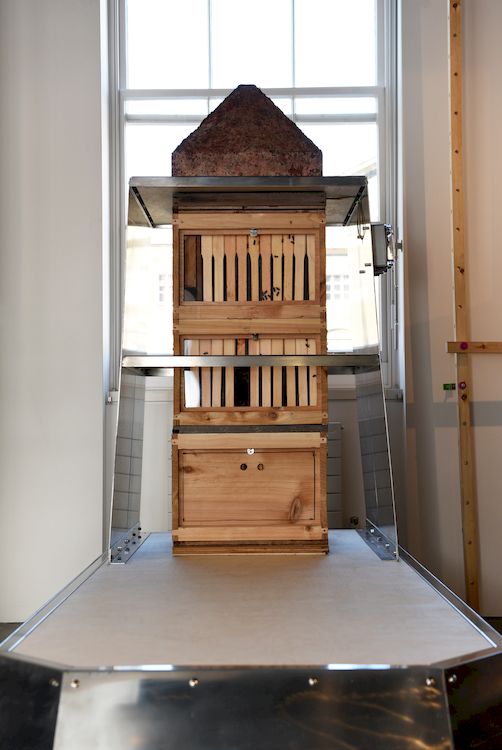
Compostcubator 2.0, by Oron Catts and Ionat Zurr, is a low-tech incubator installed in the Science Gallery courtyard that uses the heat generated by bacteria present in the compost to develop the scar cells of mice and keep them alive. Viewers can monitor the temperature of the compost, which determines whether or not the tissue culture survives. Oron Catts (also co-founder of the Australian bioart center SymbioticA) and Ionat Zurr already presented their Tissue Culture and Art Project in 1996, using tissue culture and biotechnologies to create semi-living sculptures.
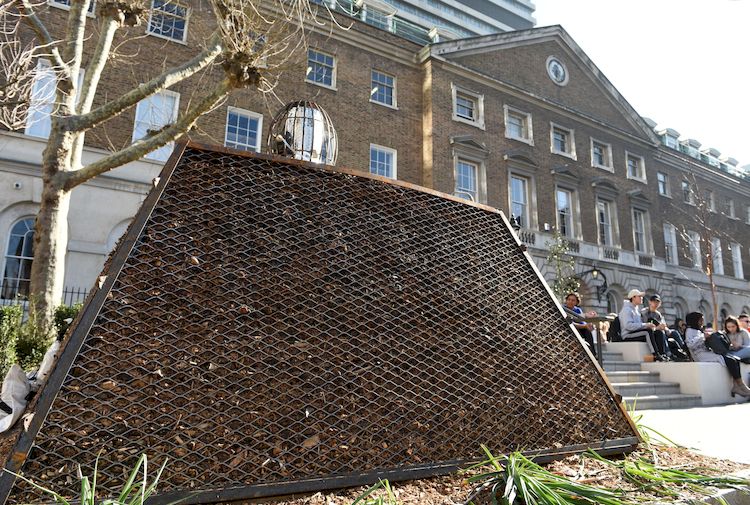
Medicine of the future: from repairing to augmenting the human body?
By affirming the intimate relationships that can exist between artistic and scientific practices, “Spare Parts” shows to what extent medical research is connected to the evolution of our societies and shaped by our cultures—ethically, technologically and philosophically. The work of Amy Congdon, who applies the techniques of traditional crafts such as embroidery or lacework to the field of tissue engineering, is a memorable example. Her installation Crafting the Body offers a glimpse of a not-so-distant future, where repairing the human body could take the form of an artwork.

“Spare Parts”, showing though 12 May 2019 at Science Gallery London.
In 2020, five new Science Gallery spaces will open in Detroit, Bengalore, Venice, Melbourne and Rotterdam.
